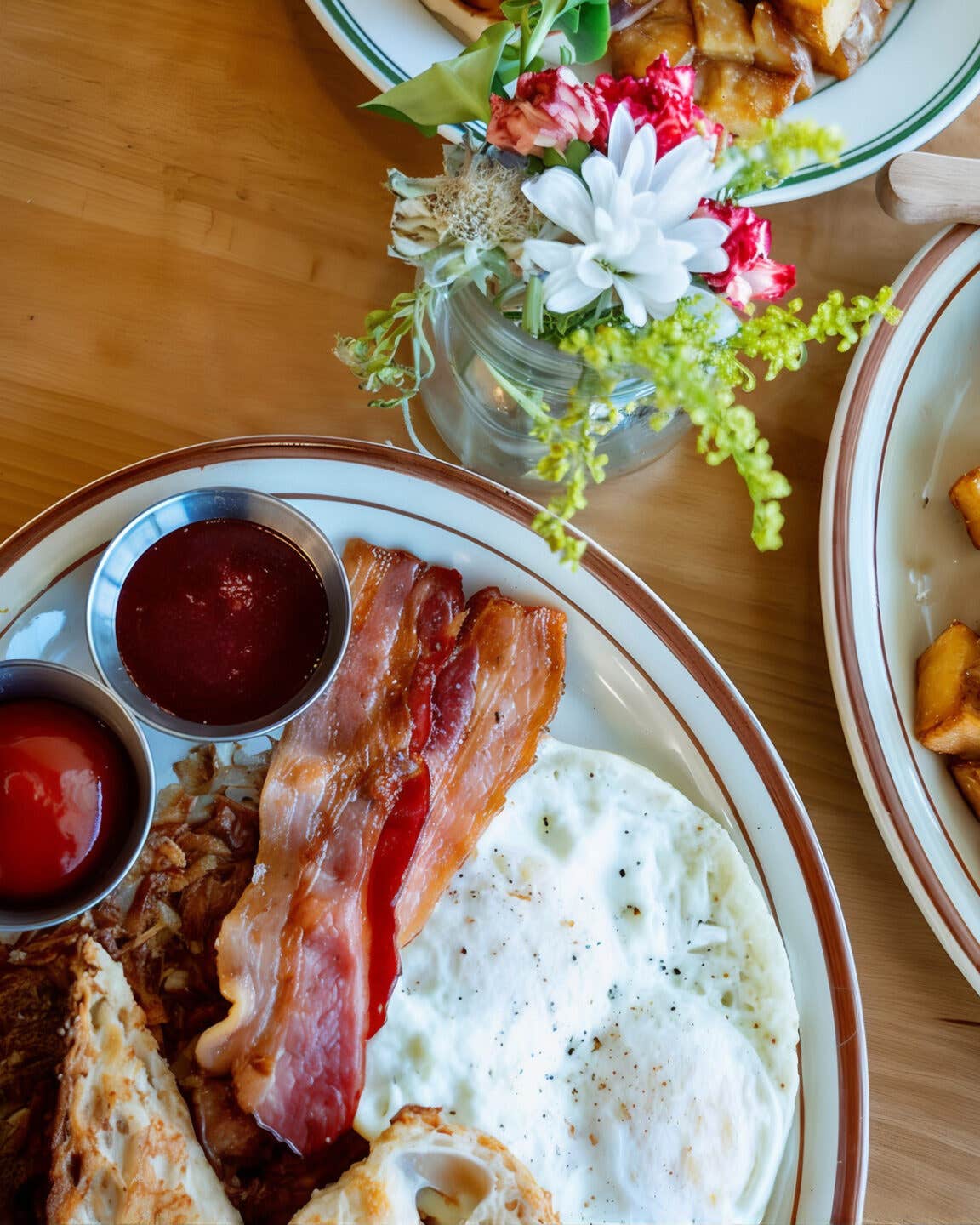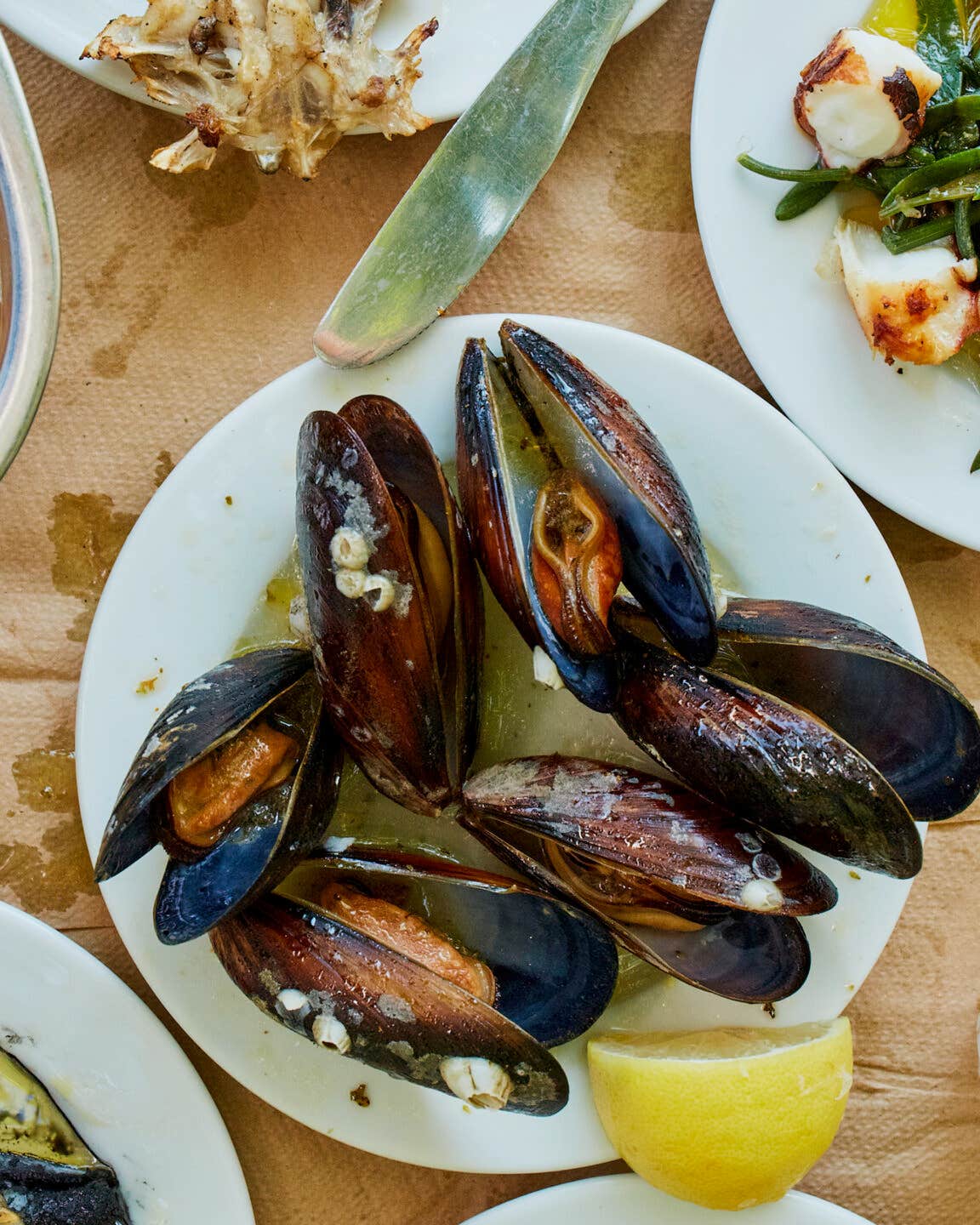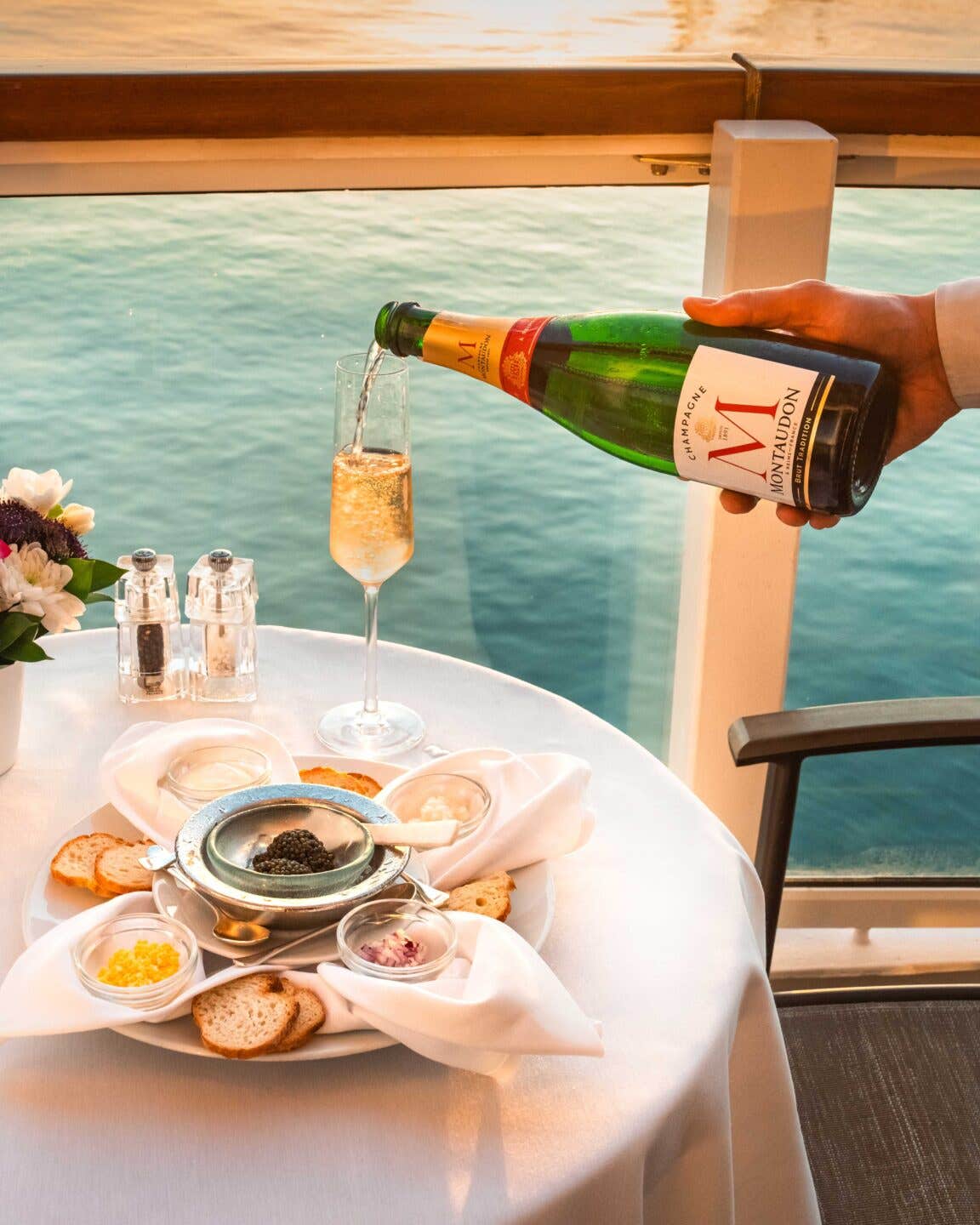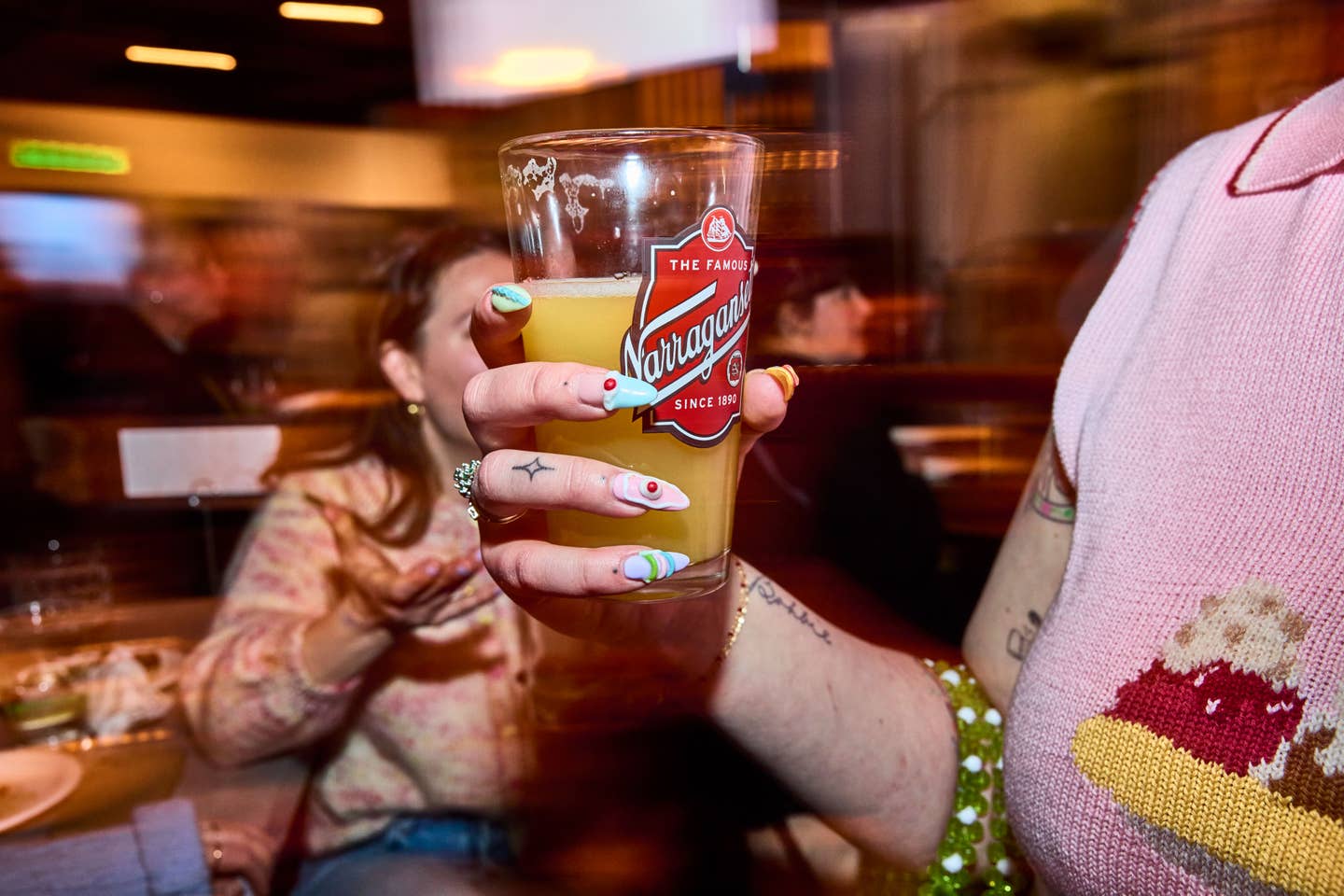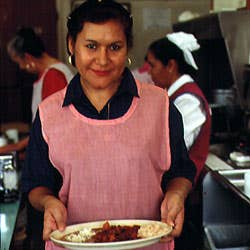
Border Food
I arrived in the hot, dry, bustling West Texas border town of El Paso in the summer of 1995 at sundown, just as the sky was going pink. Huge, billowy Southwestern clouds haloed the skyline. The Chihuahuan Desert, which surrounds the city, looked flat and dusty—but the peaks of the mile-high Franklin Mountains, the southernmost extension of the Rockies, push into the very heart of the city, and I couldn't help thinking that they resembled a line of huge, jagged tortilla chips stuck upright in a bowl of chili.
The culinary metaphor probably occurred to me because I'd come to visit El Paso and its neighbor just across the border, Ciudad Juarez, to learn about a reportedly delicious sub-variety of Mexican cooking that might best be termed simply "border food." Now, El Paso is in Texas, and Juarez is in the state of Chihuahua, Mexico—but the cuisine I'm talking about is not, emphatically, what is usually meant by Tex-Mex. It isn't oversized combo platters blanketed with melted orange cheese, or crisp-fried tacos filled with greasy ground beef. It's marinated cactus salad wrapped in a just-made tortilla, or enchiladas, stacked instead of rolled, and smothered in delicate red chile sauce, or flavorful fresh chiles stuffed with cheese and lightly fried, and served with nothing on the side except more of the same. It is plain cooking, served up unadorned, with a distinct regional character—pure, complex, and unambiguous.
Early Spanish explorers found their way through a pass in the mountains near here in 1598, and dubbed the spot El Paso del Norte—the pass of the north. That name was also originally given to what is now Juarez, when it was founded in 1659. Today's El Paso started life as a Spanish military garrison in 1780. After El Paso del Norte changed its name in 1888 in honor of the Mexican president, Benito Juarez, the American town borrowed the name El Paso for itself. In a way, then, the two cities are really twins—mirror images of each other across the Rio Grande. But the border between the two is real, and Juarez, with its population of about 1.5 million (El Paso has about 675,000) and its NAFTA-driven manufacturing complexes, is not exactly a magnet for Texas tourism.
There is also a lot more Mexican food in El Paso than there is American food in Juarez. It's Mexican food with a distinct identity, however—influenced by the cooking of Chihuahua, but with a number of little twists. In a way, it's not unlike the Italian cooking of San Francisco's North Beach, in the sense that it's a classic immigrant cuisine, adapting traditional familial dishes to local ingredients and, eventually, local tastes.
Oil is used more than lard, for instance, and beef more than pork. Jack cheese appears in place of softer Mexican queso. And there is an occasional borrowing from New Mexican cuisine, like the use of posole (hominy). Above all, this food is surprisingly delicate—full of flavor and texture and occasionally spicy but stylistically subtle. Local cooks don't strive for "rustic"; they take great pride in the preparation of their dishes.
This became apparent at my first meal in El Paso, at a warm little neighborhood restaurant called Casa Jurado, where proprietor Henry Jurado serves up ice-cold Mexican beers with lime to a loyal clientele of locals awaiting their moles, salpicons (cold shredded-beef salads flavored with lime and chiles), or flautas (crispy flutes of fried tortillas wrapped around a spiced-meat filling). Henry recommended that I try his enchiladas norteñas, a towering, slightly tilted stack of corn tortillas interspersed with layers of melted cheese and cloaked in a complex red chile sauce with an elusive but genuine heat. When I begged for the recipe, Henry's wife, Luz, offered to give me a cooking lesson the following day.
Luz, one of 13 children, learned to cook from her mother and grandmother in Mexico. She welcomed me at the appointed time to the bougainvillea-covered Jurados' adobe, perched in the cactus-studded foothills overlooking downtown El Paso. A shy, attractive woman, she seemed most comfortable when sharing cooking lore. Picking up a brittle dried red colorin chile, she cautioned "If heat is not what you want in a sauce, remove the seeds and the vein." As she stacked and filled the enchiladas, she continued, "Did you know that a corn tortilla has an inside and an outside?" She demonstrated by holding out a corn tortilla and showing me that its inner side has a little membrane of dough that can be lifted up, while the outer is tough and smooth, able to withstand rolling and direct heat. When she had finished assembling the enchiladas, she pointed to them proudly. "No yellow cheese," she said.
This proved to be a common refrain in El Paso. I heard it again the next morning from Kenneth Haddad, proprietor of the H & H Car Wash and Coffee Shop, who added, "We don't use a lot of sour cream or shredded lettuce, either." Haddad's father left Syria to join El Paso's large Syrian community in the 1920s, opening a car wash (with a soda fountain attached) in 1958. Later, he rented the soda fountain to two Mexican women, who started serving Juarez specialties. Now Kenneth runs the coffee shop, which is popular with everyone from power breakfasters to chic women in tennis dresses to dripping-wet car washers in rubber boots.
At the H & H, I sampled a creation I couldn't have imagined in my wildest Tex-Mex dreams—a chile relleno burrito. This was exactly what it sounds like: a flour tortilla wrapped around a slender, elegant fried green chile stuffed with oozing white cheese. It was presented plain and lonely, all by itself on a white plate—a poignant desert landscape—and it was absolutely delicious. Standing beneath a sign reading SMOKING IS ALLOWED, Haddad stopped dragging on a cigarette just long enough to ask his cooks to make me some carne picada when I finished my burrito. Again, the plate was absolutely austere in presentation—one loosely wrapped tortilla with glistening red chile-spiked meat spilling out, topped by another of the same. "I want people to see what they are eating," Haddad told me. "I want the flavors to star." And, that's exactly what they did.
When she heard that I was going to El Paso, my friend Zarela Martinez, who owns Zarela's, a noted Mexican restaurant in Manhattan, insisted that I call her mother, Aida Gabilondo, a longtime resident of the border region. I did, and was rewarded with an invitation to join her and Zarela's sister Clarissa Delgado for an afternoon of cooking in the borrowed kitchen of an old restaurant just over the Texas and Mexican borders, in New Mexico. Aida (named by her opera-loving father) is a short, twinkly woman, a well-known cook, and the author of Mexican Family Cooking (Fawcett, 1986). "Cooking for me is a blessing and true entertainment," she said when we met. "It's the opposite of work."
Soon I was enjoying what I have come to think of as the definitive border food experience—watching Gabilondo peel a long green anaheim chile for chiles rellenos while disparaging Tex-Mex food. "We abhor the idea of combination platters," she told me. "The idea of piling three or four things on one plate came about because people were in a hurry and didn't have the help required to wash dishes for separate courses. We think every taste deserves a chance, every dish should stand alone." I saw what she meant as I tasted the chiles rellenos, and was transported by its slippery, barely crisp bite and haunting blend of flavors.
Back in El Paso that evening, I wasn't exactly hungry, but I wanted to visit another local landmark, the L & J Cafe. Here, 80 percent of the customers drink beer with ice—a tradition that began when one regular was told by his doctors to either quit drinking or switch to watered-down beer; he opted for the latter, and his pals decided to keep him company—and everybody eats savory little snacks. I watched a procession of crisp mini-flautas, cheese-oozing quesadillas, and blazing red enchiladas go by, and managed to resist them all—but I couldn't say no to the chile con queso, a bowl of soft, stringy liquid cheese festooned with loud, hot chiles all but crying to be scooped up with freshly fried tortilla chips. It was the perfect light supper, border-style.
I got up early the next morning to meet W. Park Kerr, who had offered to be my guide on the other side of the border. Kerr and his mother, Norma Kerr, started The El Paso Chile Company in 1980 with a $500 investment in ristras—garlands of dried red chiles. Now they run a busy store and a lively mail-order business and sell everything from Hell Fire & Damnation hot sauce to Sweet Texas Fire jalapeño honey mustard in fancy food stores and grocery chains across the country. Kerr is the principal ambassador of border food in the United States—and, as he would probably be the first to admit, the cuisine's principal commercializer as well.
Crossing the border, driving over the bridge that spans the Rio Grande, we quickly arrived at our destination, Juarez's open-air Mercado Cuauhtemoc. It was bursting with vitality. At every food stall, there were people chopping, peeling, slicing, frying, laughing, talking, haggling. There were literally hundreds of vendors, spread over blocks and blocks, selling everything from mangoes to medicinal roots, chiles to T-shirts, pet food to dried snake powder. There were whole cow carcasses, and freshly slaughtered pigs. Buckets of birdseed were lined up next to galvanized containers of dried beans and rice. One stand sold nothing but cheeses made by a local Mennonite community.
Kerr steered me through the throngs to meet the women at one of his favorite food stands—the muses, he said, from whom he culls inspiration for his products. As we approached, they were shaping a brick-red mound of ancho and pasilla chile paste ground with hulled cantaloupe seeds—their version of a pipian, usually made with pumpkin seeds instead. The women greeted us with big smiles. "Look," Kerr said. "There's the 'human Cuisinart'." He pointed to a young man at their side who was whacking away at a stack of trimmed cactus paddles like Zorro on fast-forward, stopping periodically to hand the results to the women, who cut the pieces further into a julienne, then boiled, drained, and finally marinated them in lime juice with chiles, cilantro, garlic, onions, oil, and salt to make nopalito salad. Scoops of this are spooned into tortillas for sale as snacks. They look so foreign, but taste somehow familiar, almost like green beans—and are delicious.
Next, Kerr led me to a tiny, nameless food stall under a flight of stairs in an ancient, ramshackle building. It is run by a couple of efficient young cooks who offered us another version of chile relleno burritos—this time made with fat, spicy-sweet red poblano peppers. These, said Kerr, are the best chiles rellenos he's ever had. They tasted pretty spectacular to me, too, I must admit.
Before we returned to El Paso, as if to prove to me that there's more to Juarez's cooking than market specialties, Kerr swung slightly out of the way to an oversize, fiesta-bright restaurant called Casa del Sol, where the waiters wear black tie and the menu includes things like fresh grilled black Boquilla bass and tenderloin steak topped with lemon butter and herbs. We didn't have time for a meal, but Kerr insisted that we at least sample the restaurant's version of another border-food classic—an escabeche of crunchy jicama, cauliflower, zucchini, and other vegetables, pickled in a spicy marinade. It left a fresh, glowing taste of Juarez in my mouth as we passed back over the border.
That night, Kerr and his wife, Martina Lorey, an El Paso architect, invited me to dinner at their stylishly quirky 1920s pink-washed adobe house. I ate till I could barely move—grilled quesadillas filled with asadero cheese (sort of a Southwestern mozzarella) and served with smoky salsa made from grilled green chiles, onions, tomatoes, and corn; a salad of grilled prawns and scallops marinated in lime and tequila; a main course of salpicon; and for dessert, partially peeled Mexican mangoes impaled on beautiful Victorian silver forks. It was all very good, and very elegant—another side of border food. But I found myself wondering if maybe the H & H would be open in the morning so I could stop by on my way to the airport for, well, you know …
Keep Reading
Continue to Next Story

